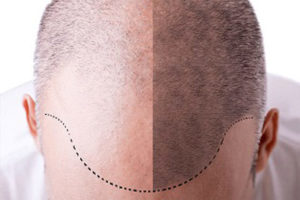
Hair Transplantation
Hair transplantation is a surgical technique that moves hair follicles from a part of the body called the ‘donor site’ to a bald or balding part of the body known as the ‘recipient site’. It is primarily used to treat male pattern baldness. In this minimally invasive procedure, grafts containing hair follicles that are genetically resistant to balding, (like the back of the head) are transplanted to the bald scalp. Hair transplantation can also be used to restore eyelashes, eyebrows, beard hair, chest hair, pubic hair and to fill in scars caused by accidents or surgery such as face-lifts and previous hair transplants. Hair transplantation differs from skin grafting in that grafts contain almost all of the epidermis and dermis surrounding the hair follicle, and many tiny grafts are transplanted rather than a single strip of skin.
Since hair naturally grows in groupings of 1 to 4 hairs, current techniques harvest and transplant hair “follicular units” in their natural groupings. Thus modern hair transplantation can achieve a natural appearance by mimicking original hair orientation. This hair transplant procedure is called follicular unit transplantation (FUT). Donor hair can be harvested in two different ways: strip harvesting, and follicular unit extraction (FUE).
Follicular unit extraction (FUE)
With Follicular Unit Extraction or FUE harvesting, individual follicular units containing 1 to 4 hairs are removed under local anesthesia; this micro removal typically uses tiny punches of between 0.6mm and 1.0mm in diameter. The surgeon then uses very small micro blades or fine needles to puncture the sites for receiving the grafts, placing them in a predetermined density and pattern, and angling the wounds in a consistent fashion to promote a realistic hair pattern. The technicians generally do the final part of the procedure, inserting the individual grafts in place.
FUE takes place in a single long session or multiple small sessions. The FUE procedure is more time consuming than strip surgery. An FUE surgery time varies according to the surgeons experience, speed in harvesting and patient characteristics. The procedue can take anywhere from a couple hours to extract 200 grafts for a scar correction to a surgery over two consecutive days for a megasession of 2,500 to 3,000 grafts.With the FUE Hair Transplant procedure there are restrictions on patient candidacy. Clients are selected for FUE based on a fox test,though there is some debate about the usefulness of this in screening clients for FUE.
FUE can give very natural results. The advantage over strip harvesting is that FUE harvesting negates the need for large areas of scalp tissue to be harvested, so there is no linear incision on the back of the head and it doesn’t leave a linear scar. Because individual follicles are removed, only small, punctate scars remain which are virtually not visible and any post-surgical pain and discomfort is minimized. As no suture removal is required, recovery from Micro Grafting FUE is less than 7 days.
Disadvantages include increased surgical times and higher cost to the patient. It is challenging for new surgeons because the procedure is physically demanding and the learning curve to acquire the skills necessary is lengthy and tough. Some surgeons note that FUE can lead to a lower ratio of successfully transplanted follicles as compared to strip harvesting.
Follicular unit transplant (FUT)
Follicular unit transplant (FUT) is the traditional hair transplant method which involves extracting a linear strip of hair bearing skin from the back or the side of the scalp. The strip is then dissected to separate individual grafts.
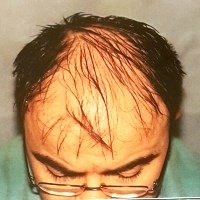
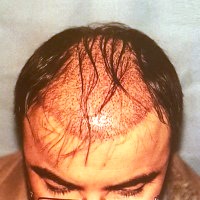
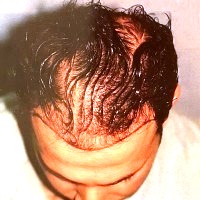

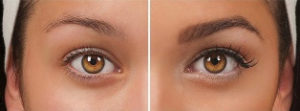 Eyebrow Transplantation
Eyebrow Transplantation
Eyebrow transplants are designed to restore growing hair to eyebrows that are overly thin, scarred, or completely missing. The absence of hair can be due to genetics, prior electrolysis or laser hair removal, over-plucking, thyroid or other hormonal abnormalities, or trauma due to surgery, burns or other types of accidents.
The donor hairs come from the scalp which, when transplanted into the eyebrows, continue to grow for a lifetime and therefore need to be trimmed typically once a month. To provide a natural appearance, the hairs are transplanted primarily one and occasionally two at a time, the natural way eyebrow hairs grow. This is a very delicate procedure, requiring perfect placement of these hairs into tiny (half-millimeter) incisions that are angled at just the right direction and positioned to mimic natural growth. The use of all-microscopically dissected grafts allows their placement into the smallest possible incisions so as to minimize scarring and damage to already existing hairs.
A procedure typically involves the placement of 50 to as many as 325 hairs into each eyebrow, depending upon the existing amount of hair and the desired size and density. Performed usually under a mild oral sedative, the two-hour procedure is essentially painless, as is the recovery period.
For the first two to four days after the procedure, tiny crusts form around each transplanted hair. By three to five days, other than some occasional mild pinkness which fades out by the first week, patients are able to return to normal activities without any sign of having had a procedure. Sutures that are placed in the donor area are removed at one week. The transplanted hairs fall out at around two weeks, then start to regrow at three months, where they will continue to grow for a lifetime.
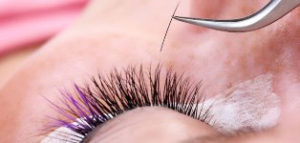 Eyelash Transplantation
Eyelash Transplantation
Eyelash transplantation is performed on outpatient basis under local anesthesia and takes two to three hours to complete. The steps involved in the surgery are:
Donor area preparation: Firstly donor area – usually back of the scalp – is shaved and cleansed to prepare it for the surgery.
Administration of anesthesia: Then local anesthesia is administered in the area around the eyelashes.
Hair extraction: After administration of anesthesia, hair follicles are extracted using follicular unit extraction. Grafts with 1 to 4 hair follicles are extracted for eyelash hair transplantation.
Recipient area preparation: After extraction of hair, surgeon prepares recipient area by administering local anesthesia and making extremely small incisions for implantation of follicles. While preparing recipient site, direction and angle of eyelashes are kept in mind to produce natural looking results.
Graft implantation: After preparing recipient site, surgeon implants 1 to 2 hair follicles at a time in specific directions. Single procedure usually involves implantation of 30 to 40 hair follicles to get desired density of eyelashes.
